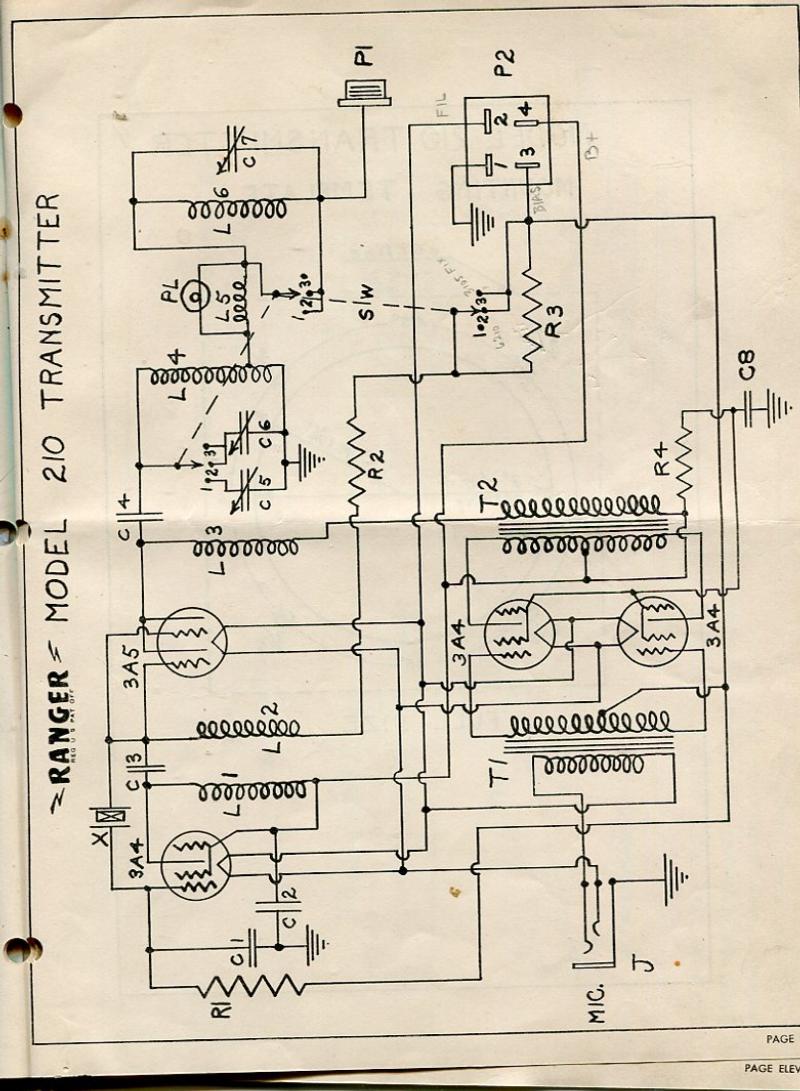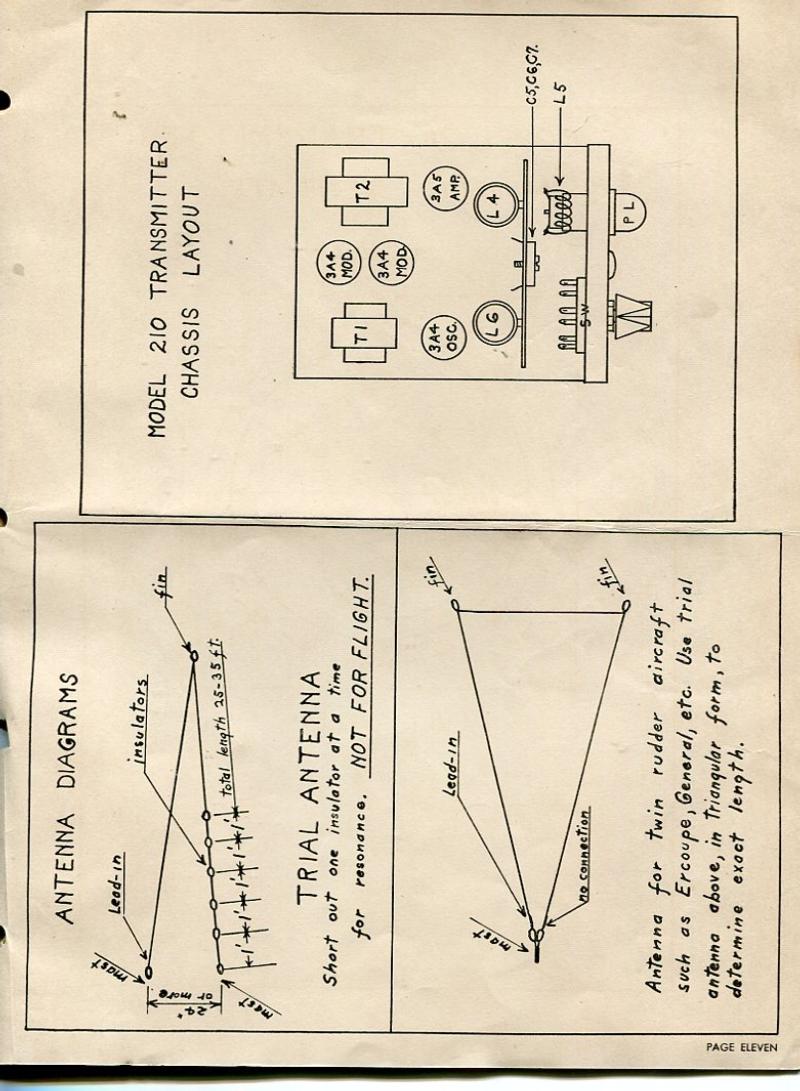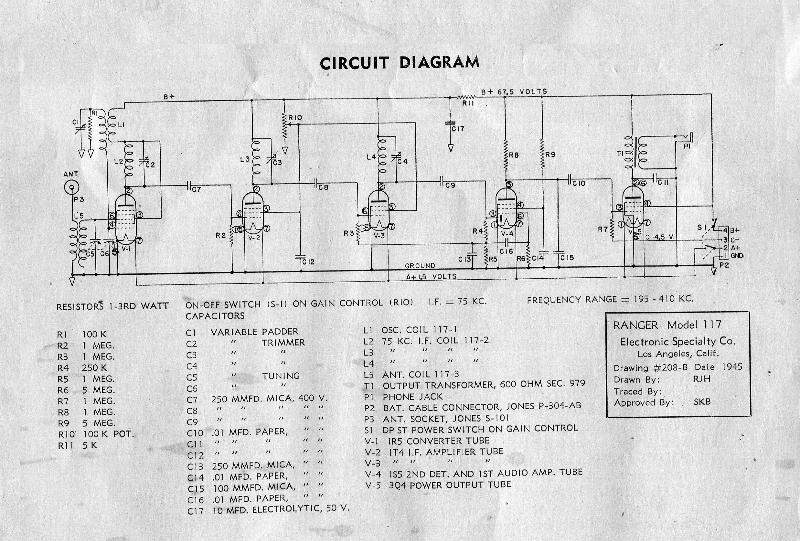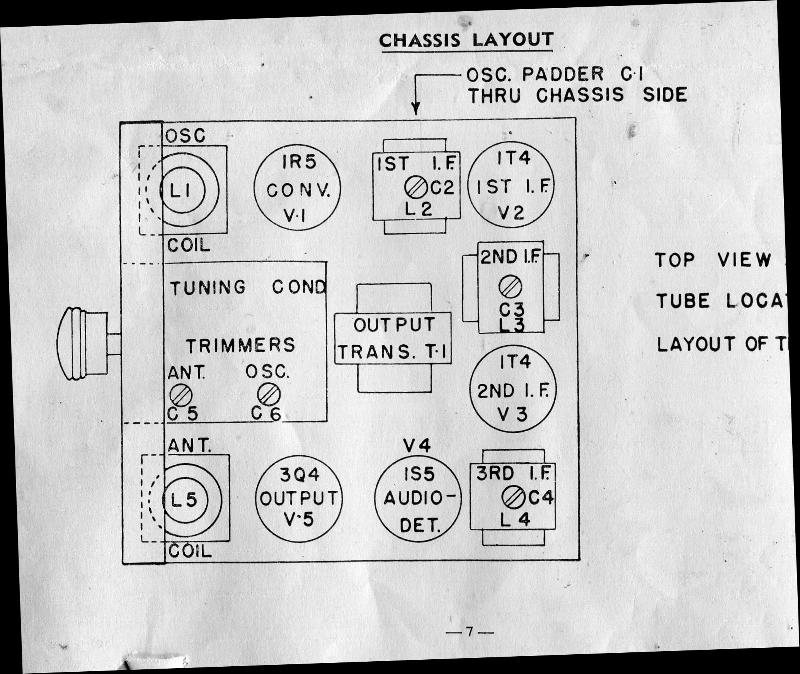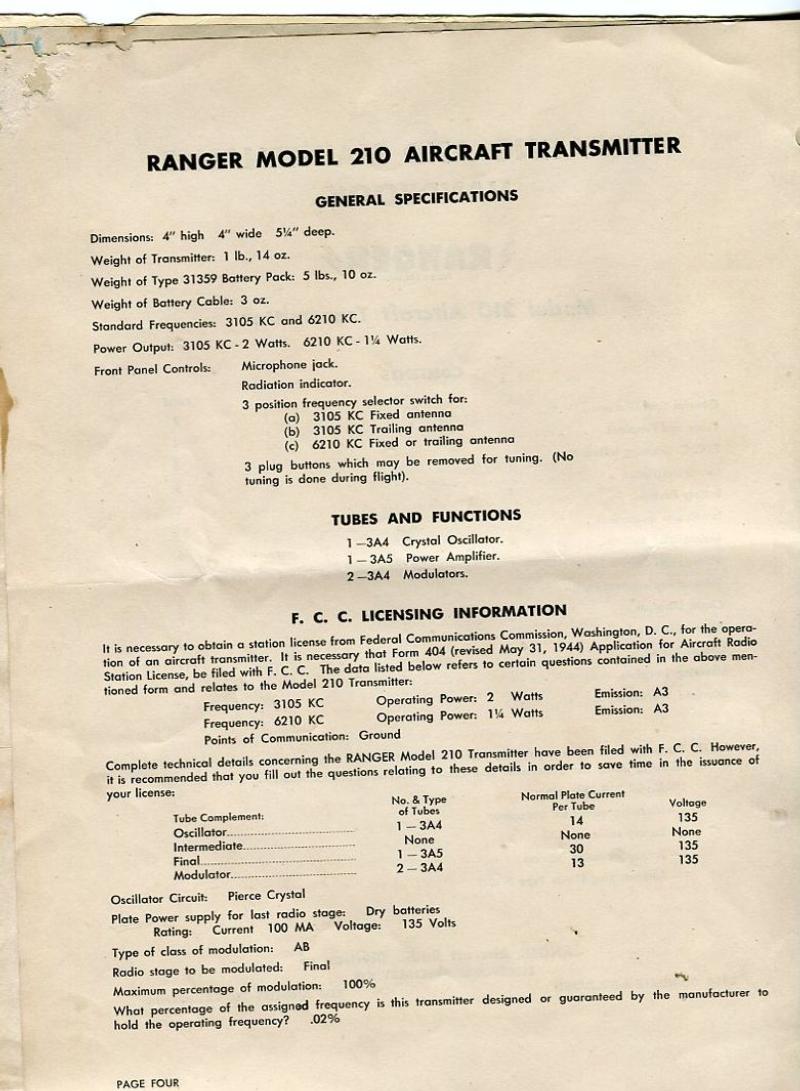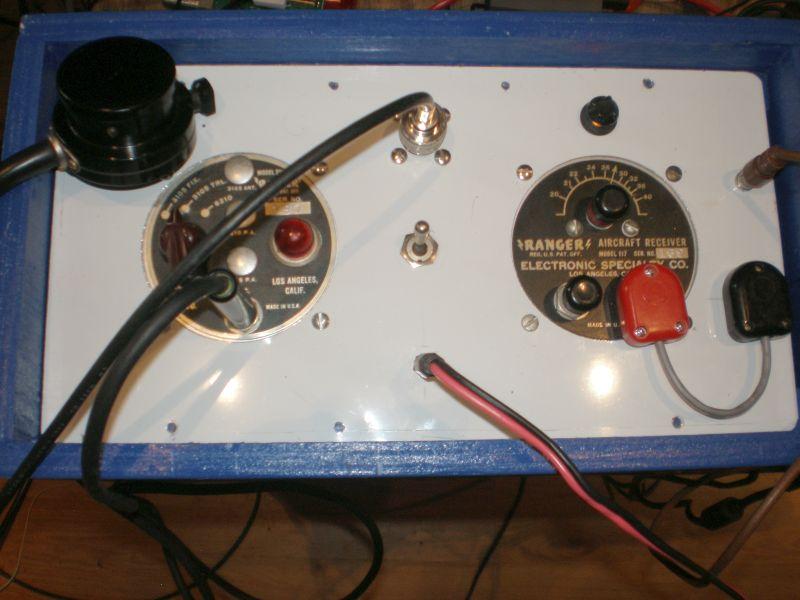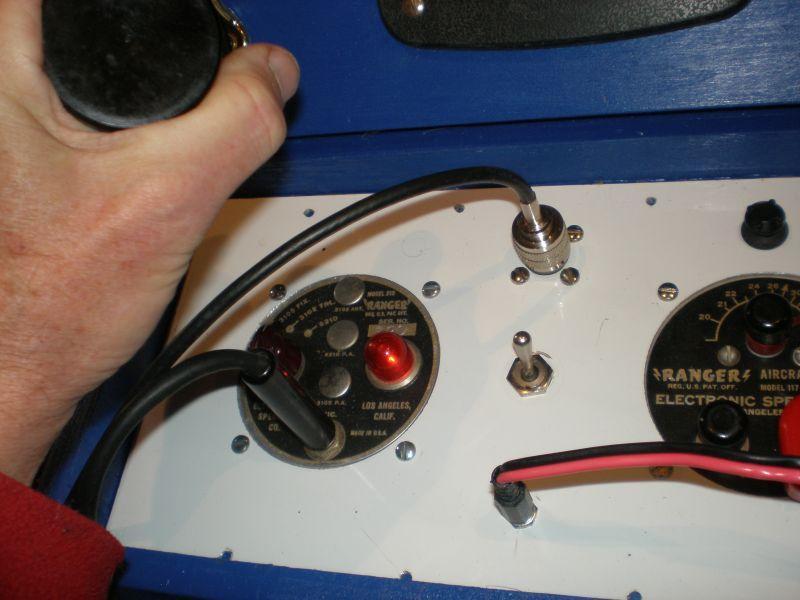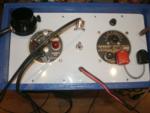
Posted By: Robert Nickels (ranickels) Posted: 05/11/2019 Technical 05/11/2019 |
W9RAN Field RadioVintage light aircraft radios repurposed |
|
In the early days of aviation radio, transmissions originated from the ground using the longwave transmitter also used for homing, and pilots acknowledged by wagging their wings. It didn't take long to realize the benefits of having transmitting capability onboard the plane as well, and the first generation of aircraft radio used the low HF band. Given today's crowded airspace it is hard to imagine every aircraft sharing the same frequency - 3105 kHz - to talk to the tower while still listening for replied on the longwave band. For light aircraft, power output seldom exceeded a few watts, which with a fairly inefficient loaded longwire antenna meant a limited range, but that was sufficient. Airlines and those flying longer distances drew power from a vibrator supply or even a dynamotor, but the most common setup used A and B batteries, just like some home radios still did, which were readily available. I acquired this near-mint set at the Cedar Rapids hamfest last summer. The Ranger model 210 transmitter could put out 2 watts from it's battery pack power supply on either 3105 or by doubling, 6210 kHz which was the alternate frequency for daytime use. The model 117 reciever also ran from batteries and tuned the radio range band, 200 to 400 kHz to hear transmissions from the tower, weather, and homing beacons. A RAN Technology converter brings the 75 meter band down so the LF band receiver can be used as a tunable IF and a 5 watt audio amplifier provides loudspeaker volume instead of requring headphones. Instant heating 1.5 volt battery tubes are used in both transmitter and receiver, along with a boost-type DC-DC converter to produce the 150 volts B+ instead of B batteries. A previous owner had rewired the units for self-bias to eliminate the need for a C battery as originally required. The battery pack would have fit into a small box and carried onboard and replaced when necessary (hopefully before going dead during a flight!) The transmitter uses a carbon microphone and is crystal controlled on 3885 kHz, with 2 watts output. The normal airplane antenna would have been a longwire running to the tail with a loading coil resonator, but provision was made for a trailing wire antenna as well. The receiver would have had it's own low-frequency antenna for flying the radio range and receiving the tower. I decided the pair would make a neat 75 meter AM Field Radio, and fitted them into a custom made plywood box that could be easily transported (to places like the Dayton Hamvention, for the WWII military radio net). The removable lid has a 5" speaker and a storage compartment on the rear allows storage of the mic and Li-Ion battery pack. Listen to a bit of K5UJ calling CQ as a receiving test: Listen The Ranger was an obscure manufacturer but big names including GE, Lear, Raytheon, Bendix, Philco, RCA, and Motorola produced similar radios. Most recognizable after WWII was the Aircraft Radio Corp., producers of the wartime "Command Sets". A portable lightplane radio like this was often used when the ferry pilots (often women) flew the warbirds from the aircraft plant to a nearby base where the command sets and other radio equipment would be installed. Having seen the RCA AVT-112/AVR-20 packaged in a wooden case for this purpose was the inspiration for making my own version. I was fortunate to receive both manuals with my Rangers, but with a little effort the schematic and interconnections for most of these simpler aircraft radios can be figured out and it is a lot of fun to put such a cool piece of vintage radio equipment back on the air in a useful way. |
|
Related Images
Click on the image title or on the image itself to open the full-sized image in a separate window.Latest Articles
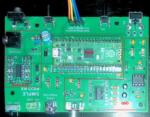
Technical
Posted: 01/29/2025
Comments: 0 |
Pico Rx performance - Excellent performance on 630m WSPR
The Simple Pico Rx is my minimalist implementation of Jonathan Dawson's "Pico Rx" at 101things: https://github.com/dawsonjon/PicoRX In this basic form the receiver consists of a Quadrature Sampling Detector (QSD aka Tayloe) and the Pico2 MCU which handles all DSP functions. There are NO front-end filters, the only bandwidth limitation comes from the tracking filter... READ MORE |
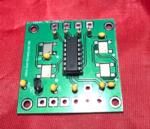
Crystal Replacement
Posted: 08/226/2024
Comments: 0 |
Making SMT "no lead" parts easier to use
SMT is the future - but how can we actually use parts without leads? ... READ MORE |
|
Crystal Replacement
Posted: 02/38/2024
Comments: 0 |
How good can a crummy receiver be?
Hundreds of different simple SDR receivers have been designed around Dan Tayloe's Quadrature Sampling Detector or QSD. Mine add nothing to the state of the art, and in fact subtract things, as I like minimalist solutions and the QSD is right in that sweet spot. Following the evolution of Tayloe's design I delete the resistors in series with the sample lines for inst... READ MORE |

Technical
Posted: 02/37/2024
Comments: 0 |
What's in a number (3253)?
The FST3253 dual four-to-one mux/demux IC has long been used as a "Tayloe Detector" or QSD (and QSE) in low-cost SDRs. They provide incredible performance for such a simple circuit, converting RF to baseband IQ with low loss and the ultimate in simplicity. Unfortunately the original FST3253 part has become obsolete and while substitutes are available, this is where the... READ MORE |

Vintage Ham Radio
Posted: 02/32/2024
Comments: 0 |
The Stancor 10P Transmitter
There weren't really many commercial transmitters in the 1930s as most hams built their own. But many of the ones that were offered came from the transformer companies who had two chances to profit. First, from those who would buy the kit, and two, from those would would see it in the (free) booklets the companies provided to their distributors who would then sell the iron to ham... READ MORE |

Vintage Ham Radio
Posted: 12/355/2023
Comments: 0 |
The Care and Feeding of the EF Johnson Courier amplifier
The EF Johnson "Courier" is a grid-driven amplifier using two 811A tubes. Switching is provided for operating in either class C for CW or as a class B linear amplifier for AM or SSB. Rated power is 500 watts input for CW, 500 watts PEP input for SSB, and 200 watts input for double-sideband AM with carrier. Since all amateur power levels were meas... READ MORE |

Historic
Posted: 11/329/2023
Comments: 0 |
TV Duplexer
Some things are interesting, even if totally useless nowadays. Such is the case with the Philco 426-3034 Crossover Kit for UHF TV. What the heck is that? Well, back in the late 50s, UHF television stations operating on channels 14-83 started to appear in many areas of the US where viewers had a VHF-only TV antenna, and in many cases an externa UHF converter was... READ MORE |

Crystal Replacement
Posted: 11/327/2023
Comments: 0 |
Replacing failed crystals
For decades, quartz crystals were used everywhere a stable frequency source was needed, even in some applications that depended on overtone (harmonic) behavior into the VHF range. These crystals were less stable and more dependent on circuit parameters that fundamental types and thus more problematic. Such was the case with the 94 MHz crystal in the 2 meter converter ... READ MORE |

Historic
Posted: 11/315/2023
Comments: 0 |
My Own Ham Radio Story by W9RAN
Everyone has a story of how they got involved in ham radio - this is mine. It started much earlier, including receiving a Knight Kit Span Master shortwave radio for Christmas in about 1963, at age 12. I'll never forget the night my dad and I finished building it and I wanted to try it out. It came with a 50 ft. antenna which was still coiled up - but ... READ MORE |

Technical
Posted: 09/267/2023
Comments: 0 |
Hot to simulate vacuum tubes in LTSpice
LTSice is a powerful simulation tool that is provided free by Linear Technology Corp. It comes with a complete library of passive and common analog solid-state components but if you want to use it to simulate vacuum tubes, it doesen't work as-is. Even though triode and pentode symbols can be found in the "Misc" folder, they are just schematic symbols and... READ MORE |
